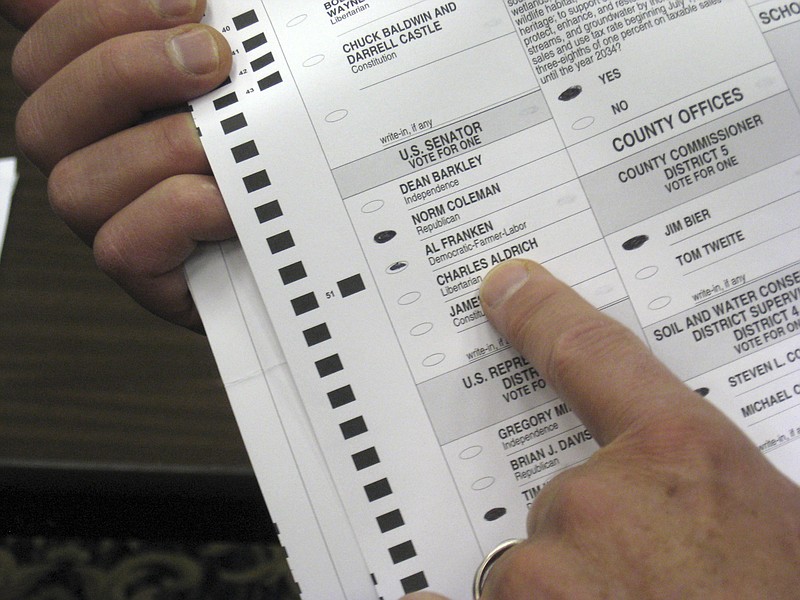ATLANTA -- Two decades ago, Florida's hanging chads became an unlikely symbol of a disputed presidential election. This year, the issue could be poorly marked ovals or boxes.
Amid the global coronavirus pandemic, more people than ever are expected to bypass their polling place and cast absentee ballots for the first time. Voters marking ballots from home could lead to an increase in the kinds of mistakes that typically would be caught by a scanner or election worker at the polls.
Experts say that's likely to mean more ballots with questionable marks requiring review.
While ballots subject to review have historically represented a tiny portion of overall ballots, it's possible disputes could arise and end up as part of a Florida-like fight, especially in battleground states like Michigan, Wisconsin and Pennsylvania.
"This could be 2000's hanging chad in Pennsylvania," said Suzanne Almeida, interim director of the state chapter of the nonpartisan watchdog Common Cause. "Potential challenges, delays in results, questions on which ballots count and who counts them -- there are just a lot of questions, and that could open up Pennsylvania to a lot of uncertainty."
[RELATED » Full coverage of elections in Arkansas » arkansasonline.com/elections/]
The group is working with election officials statewide, emphasizing clear and consistent guidelines for dealing with questionable marks, such as when a voter circles a name or uses an X or a checkmark rather than filling in the oval -- or even crosses out one selection and marks a second.
While all states perform ballot reviews and have rules related to voter intent, some have never seen anything like this year's anticipated absentee ballot volume. In half the states, absentee ballots accounted for less than 10% of votes cast in 2016. Many could see half or more votes cast absentee this fall.
Colorado and Washington, two states accustomed to large volumes of hand-marked ballots, have comprehensive guidelines online detailing how to interpret almost every conceivable way a voter could mark a ballot. Procedures are in place for handling markings that may be disputed by partisan observers.
But when asked for a copy of Pennsylvania's guidelines, state election officials said it would take time to gather, and directed The Associated Press to file an open records request.
Amber McReynolds, who formerly ran Denver's elections office, said consistency and detailed guidelines are essential. Otherwise, counties might perform reviews differently, leading to further challenges.
"You don't want to have a situation where you have one type of mark in a county that is processed and counted and in another it isn't," said McReynolds, who now leads The National Vote at Home Institute.
Safeguards built into the nation's myriad election systems to help voters avoid ballot-marking problems are mostly geared toward in-person voting. Touchscreen voting machines -- though considered less secure by cybersecurity experts -- do a better job than humans in marking ballots and warning voters if they try to vote twice in the same race.
In-person voting by paper ballot typically involves filling in an oval or box next to a candidate's name. In most places, voters then feed the ballots into a scanner designed to reject so-called overvotes, like attempting to fix a mistake by crossing out a name and filling in the oval next to another candidate.
Such problems during in-person voting are easy to fix. Poll workers invalidate the ballot and give the voter a new one.
"But now, if most people are not voting with machines and are voting at home, they are not going to have that notification," said Larry Norden, an elections expert with the Brennan Center for Justice.
This fall, as many as three in four voters could be voting on ballots received in the mail.
Information for this article was contributed by Frank Bajak of The Associated Press.



